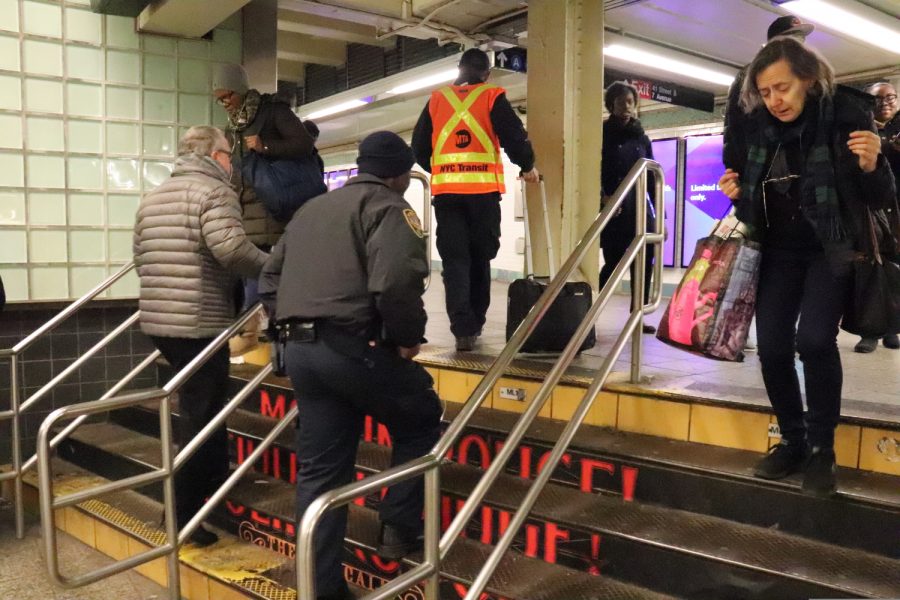Due to the Coronavirus Pandemic, What Happens Now With the MTA?
The COVID-19 pandemic has hit the MTA especially hard, resulting in sharp declines in ridership, inevitable budget cuts, and its first ever systemwide suspension of night-time service.
Starting May 6, 2020, the MTA has, for the first time in its 115 year history, suspended operations during the night-time hours from 1 a.m. through 5 a.m. in light of the ongoing Coronavirus pandemic. Although a necessary development, the shutdown has been one of the many ways where the pandemic has served to ravage and undermine our city’s life and soul.
The Metropolitan Transportation Authority is the state agency that oversees all of the public transportation, such as subways, buses, trains, and ferries, in the New York City metropolitan area. The city’s mass transit system has the largest number of stations in the world, with 424 stations. One of the oldest and largest mass rapid transit networks in the world, the MTA serves nearly six million passengers every day. The non-stop, twenty-four hour service has been one of the system’s hallmarks in the city that never sleeps. That all took a turn for the worst when the coronavirus hit New York.
New York City, the epicenter of the pandemic, has been hardest hit by COVID-19. As soon as the state of emergency was announced, daily ridership dropped by nearly 90 percent. The budget’s extreme and near complete dependence on passenger fares symbolizes the agency’s weakness in preparing for emergencies, resulting in one of the worst financial crises in the history of the MTA. Since March 2020, the agency has received nearly $4 billion in federal bailout aid to subside the unforeseen financial losses, while also continually asking for billions more in federal aid. Even then, the financial repercussions have been profound, with budget cuts bound to happen in the near future.
The MTA is projected to lose over $5 billion, even as high as $8.5 billion, in revenue by the end of the year, as a result of the pandemic. “Budget cuts are inevitable if the MTA doesn’t get enough financial assistance to cover their significant losses in revenue,” said Derrick Tan ’21, an avid transit enthusiast. What is worse is that such budget deficits may result in large increases in the fares in the near future, which will only serve to harm New Yorkers. “For now, the M.T.A.’s future looks bleak,” said Tan.
The pandemic has made MTA workers more vulnerable. The MTA’s nearly 70,000 workers are deemed essential, greatly increasing their exposure to potentially contracting COVID-19. Serving on the frontlines, these workers are forced to put their life on the line every day. They have to give up their health and safety in order to continue making a wage to support their families and lives as well as to keep the city running. Within these past few months, these workers were given no choice but to work or to lose their source of income.
Even then, the visible systemic and structural flaws put workers in serious danger. Thousands of workers became infected with the virus, with over a hundred dead. We have done so little to protect these “essential” workers, to the point where they have to choose whether to live or to struggle immensely. We are failing to support those who are literally keeping our city afloat and running.
In April 2020, in an effort to mitigate the spread of COVID-19, Governor Andrew Cuomo announced his plan to shut down the city’s subways. Every night from 1 a.m. through 5 a.m. all of the city’s subway train cars, equipment, and train stations are disinfected. This shutdown was the first time in the MTA’s 115 year history where all of the trains will cease operation. In many ways, the coronavirus served as a scapegoat to finally address the unsolved, notorious problem of uncleanliness that has plagued our city’s subways for a long time. Although, Cuomo’s decision to shut down New York’s subways during the night fails to address the city’s persistent homelessness problem. Many of the city’s homeless resort to surviving via the subway, exacerbating the struggles that New York’s homeless population will face.
While the historic decision to shut down the city’s transit serves to address legitimate public health concerns, the action does cast a stain on the great hallmarks of New York. The city’s public transit is one of the most important modes of transportation for New Yorkers. It is one of the most defining characteristics of our rich and resilient history. Our subways and buses make New York the way it is. The non-stop status that our city has always cherished will be a sight we have yet to see for a while.
The whole issue in itself remains a very complicated matter. Even during times of struggle, New York will continue being the strong city that it always has been.
“For now, the M.T.A.’s future looks bleak, ” said Derrick Tan ’21.
Caleb Yam is an Editorial Editor for ‘The Science Survey.' He enjoys journalistic writing because it allows for the open and concise expression of a...
Maggie Schneider is an Editor-in-Chief of ‘The Science Survey.’ She loves journalistic writing because it is a recognition of the infinite number of...

